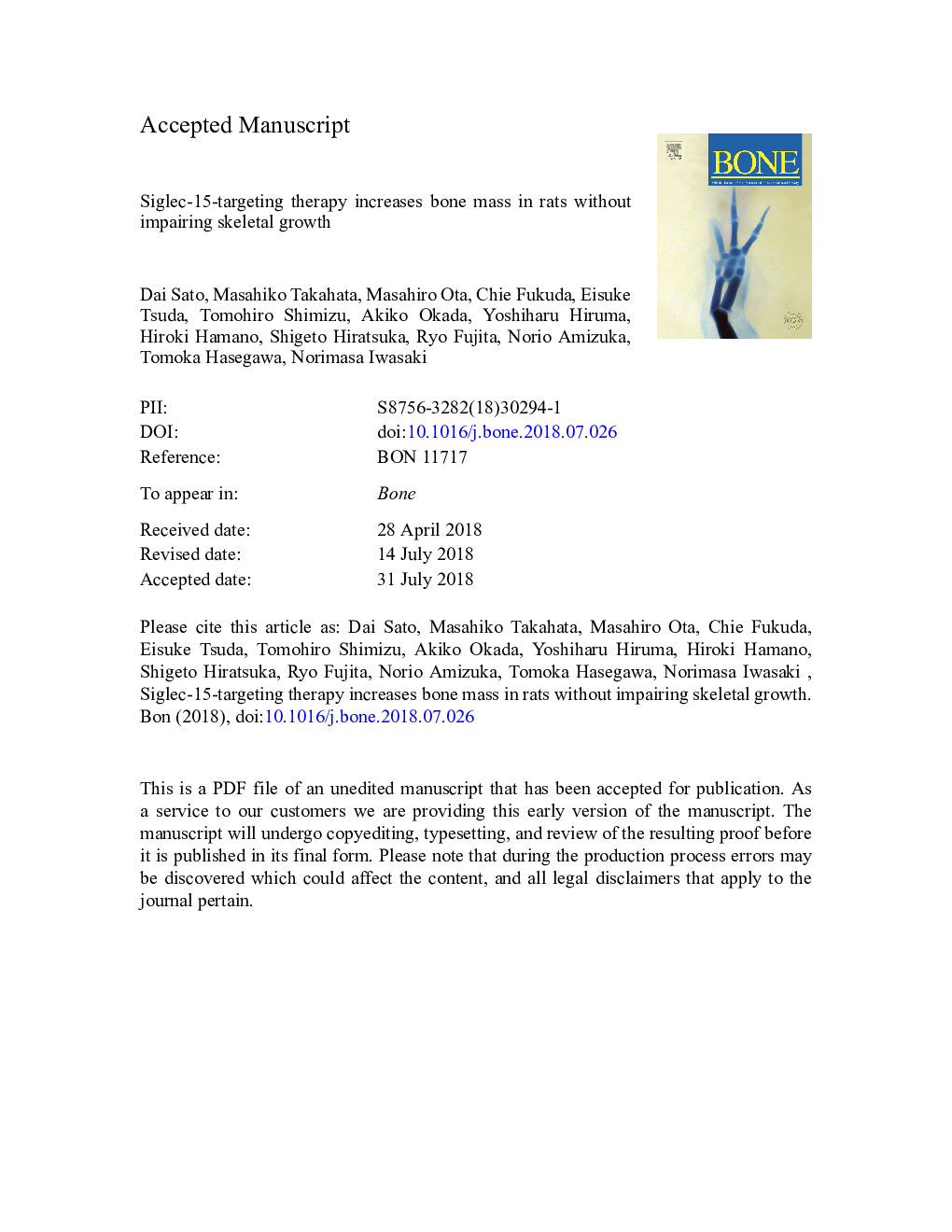| Article ID | Journal | Published Year | Pages | File Type |
|---|---|---|---|---|
| 8624758 | Bone | 2018 | 35 Pages |
Abstract
The treatment of juvenile osteoporosis has not been established due to a lack of data regarding the efficacy and adverse effects of therapeutic agents. The possible adverse effects of the long-term use of antiresorptive therapies on skeletal growth in children is of particular concern. Sialic acid-binding immunoglobulin-like lectin 15 (Siglec-15) is an immunoreceptor that regulates osteoclast development and bone resorption, and its deficiency suppresses bone remodeling in the secondary spongiosa, but not in the primary spongiosa, due to a compensatory mechanism of osteoclastogenesis. This prompted us to develop an anti-Siglec-15 therapy for juvenile osteoporosis because most anti-resorptive drugs have potential adverse effects on skeletal growth. Using growing rats, we investigated the effects of an anti-Siglec-15 neutralizing antibody (Ab) on systemic bone metabolism and skeletal growth, comparing this drug to bisphosphonate, a first-line treatment for osteoporosis. Male 6-week-old F344/Jcl rats were randomized into six groups: control (PBS twice per week), anti-Siglec-15 Ab (0.25, 1, or 4â¯mg/kg every 3â¯weeks), and alendronate (ALN) (0.028 or 0.14â¯mg/kg twice per week). Treatment commenced at 6â¯weeks of age and continued for the next 6â¯weeks. Changes in bone mass, bone metabolism, bone strength, and skeletal growth during treatment were analyzed. Both anti-Siglec-15 therapy and ALN increased bone mass and the mechanical strength of both the femora and lumbar spines in a dose-dependent manner. Anti-Siglec-15 therapy did not have a significant effect on skeletal growth as evidenced by micro-CT-based measurements of femoral length and histology, whereas high-dose ALN resulted in growth retardation with histological abnormalities in the growth plates of femurs. This unique property of the anti-Siglec-15 Ab can probably be attributed to compensatory signaling for Siglec-15 inhibition in the primary spongiosa, but not in the secondary spongiosa. Thus, anti-Siglec-15 therapy could be a safe and effective for juvenile osteoporosis.
Related Topics
Life Sciences
Biochemistry, Genetics and Molecular Biology
Developmental Biology
Authors
Dai Sato, Masahiko Takahata, Masahiro Ota, Chie Fukuda, Eisuke Tsuda, Tomohiro Shimizu, Akiko Okada, Yoshiharu Hiruma, Hiroki Hamano, Shigeto Hiratsuka, Ryo Fujita, Norio Amizuka, Tomoka Hasegawa, Norimasa Iwasaki,
